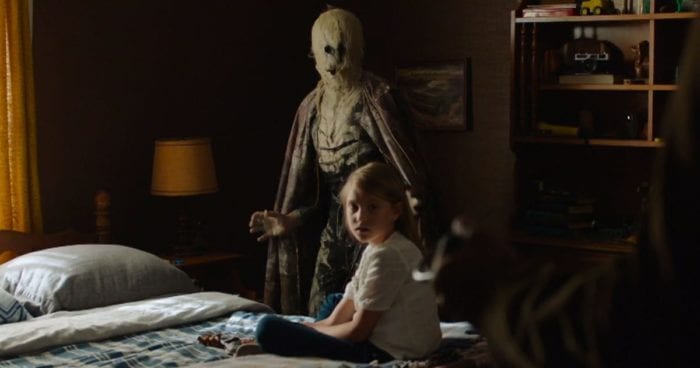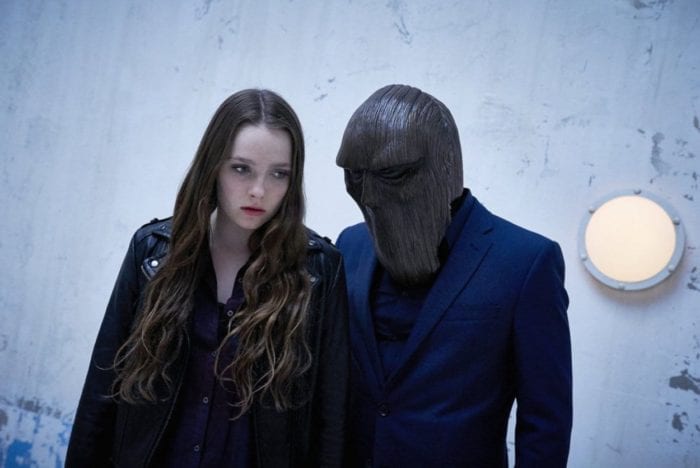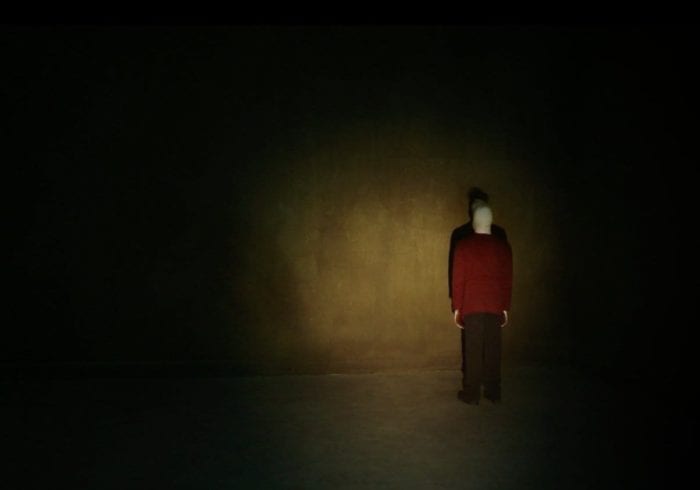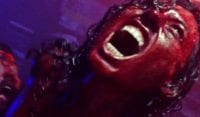To say that Channel Zero never really got a fair shake is underselling it. Billed as an anthology series in the same vein as American Horror Story, each season was based off of a different Creepypasta—that is, internet created horror stories shared on forums and Wikis. These tend to be relatively short in length, although some are on the longer side. It seems far-fetched to think that entire seasons of television could be born from internet shared short stories, but the creative team behind the show took the general premises of stories and expanded on them in meaningful ways. The result is a creative, unpredictable series that tell wildly unique stories and has since been canceled. Let’s dig in season by season, shall we?
Season 1: Candle Cove

The series starts off with a bang with Candle Cove, based off the Creepypasta of the same name by Kris Straub. It’s a brief story told in the form of forum posts about people trying to remember an old TV show about a bunch of puppet pirates going exploring for treasure. Like many Crepypastas, it’s mostly just an excuse to introduce disturbing ideas rather than a fully formed story. The show created a whole mythology behind the supernatural happenings, though.
Following Mike Painter, a child psychologist who returns home when whispers of the mysterious TV show that haunted him and the local kids return. He talks with the people he grew up with, trying to see what they remember, and the thing that sticks out most is an episode that consisted of one of the puppets yelling that they have to go inside the cave and the characters seemingly being subjected to off screen torture. It’s clear that nothing is what it seems, and Mike has to dig deep into his own troubled past to figure out how to stop this show that seemingly drives kids to commit violent acts.
The show established early on that it would tell unique, different kinds of horror stories with this season. Not only is the urban legend type set up just bone chilling, but it goes on to reveal a very satisfying mystery with a great payoff. It isn’t afraid to get weird, either. Without getting too deep into it, there are some magnificent sets and bizarre creatures that come pop up later on, with the iconic Bone Child (a person made entirely out of human teeth) being a real treat.
I find that too often, horror stories try to over explain things, entirely missing the idea that horror is at its best when you can’t completely understand everything. This season leaves enough ambiguity for it to still make your skin crawl even after the central mystery is solved. It was a promising beginning for the series.
Season 2: No- End House

The original Creepypasta for this is one of my favorites, involving an unnamed protagonist as they explore the local haunt, a place called No- End House. Supposedly, people who can stay all night there get a nice cash payoff at the end, but as the story goes on, it becomes clear that the house is not of this world. Like other stories of this nature, it’s more of a string of creepy set pieces that are memorable but don’t necessarily add up to a wholly satisfying story.
The TV adaptation took a decidedly different approach—Margot, having experienced a recent personal tragedy, goes out with friends to a haunted attraction that pops up all over the world seemingly at random called the No- End House. Inside is a truly creepy bunch of rooms, in what is one of the series’ most effective episodes ever. The first episode is, in my opinion, the season’s highlight due to how surreal and downright spooky it is. After going through the house, Margot and her friends come out in a neighborhood that looks familiar, but is isolated from the real world, and people they thought were dead show up.
It’s a nice take on the straightforward campfire story of the source material, but I will admit despite its wonderful first episode, the season spins its wheels for a lot of the run time. It introduces characters who are looking for people who have gone missing in this other world, but they are largely disposed of in efficient manner. Margot’s central conflict of dealing with her grief is better suited to a feature length movie, I think, but as a six episode arc, it takes quite a while to get to the point. There’s also a subplot involving her friend that has a bizarre image of her caressing a gigantic white amniotic sac of some kind, but it doesn’t really go anywhere either.
That kind of sums up the season as a whole—it has a wonderful premise and some really memorable visual moments that are so bizarre you can’t unsee them, but unlike the first season, which kept a really great pace and had a nice payoff, No- End House, while solid enough, is the low point of the show, with a central conflict that isn’t interesting enough to carry six episodes.
Season 3: Butcher’s Block

Based off the almost novel length “Search and Rescue,” this season follows Alice Woods (played wonderfully by Olivia Luccardi, of It Follows fame), a social worker who moves with her schizophrenic sister to a city plagued by mysterious disappearances and death. She soon becomes entangled in the mystery behind staircases that rest in the middle of the woods, and must uncover what’s going on with them and who is behind the mayhem.
Leaning more heavily into the mental illness angle than any other season, Butcher’s Block is, in my opinion, the high point of the entire series. Not only is the central mystery just outright disturbing, but it manages to keep you on your toes with bizarre scenes that mix violence with an almost beautiful or comedic tone. It’s jarring to say the least, but in a good way. I have yet to read the story it’s based on, so I can’t say how closely it sticks to the source material, but I can say that it explores the very real fear of getting a mental illness that plagues your bloodline along with the same unpredictable and surreal aesthetic that made the first season and parts of the second so good.
It should be noted that this season boasts an outstanding and scary performance from a latter day Rutger Hower, and he is just wonderful in the role of the season’s central antagonist. Moreso than the others, this season highlights the unique elements of the series that make it such a gift for horror fans looking for something different.
Season 4: The Dream Door

This season’s story is based off a Creepypasta with a simplified title of “Hidden Door.” It’s about a couple who discover a hidden door in their basement, inside of which is a mysterious, backwards walking man in a black suit. They trap the thing inside, but when they open the room back up, there are just some bloody symbols painted on the wall. It’s a brief read, and rather creepy in that appealing campfire ghost story sort of way, and this season uses a similar premise to launch into a strange story of emotions made manifest.
Following Jillian and Tom, two newlyweds who move into a new house, this season deals with them finding a hidden room in their basement at the end of a long staircase. Inside is Pretzel Jack, a super weird contortionist figure who looks like something out of Dr. Seuss’s nightmares. Jack starts killing people seemingly at random, but it becomes clear that everyone he goes after has a personal connection to Jillian.
I’m being vague because, of all the seasons, this one takes a huge turn at its midway point, and goes in a direction that echoes the first season but in a unique way. And like the others, it uses its strange ideas to show the viewer bizarre, strange things that they’ve never seen before, including a multi colored team of raincoat wearing things that murder people (seriously, it goes off the rails in the best way possible). It’s a very satisfying story, with perhaps the happiest ending of all the seasons, but it feels earned thanks to the very grounded stakes it raises. As a total aside, Pretzel Jack is weird enough to hopefully become a future horror icon.
What I would have liked from a fifth season
As of right now, the show is available to stream on Shudder, with the fourth season being added late last year. As far as I know, the show is dead, which is a real shame. The creative team showed that they could take even the shortest of stories and expand them into wildly unique, interesting tales of horror that feel unique.
Penpal is a Creepypasta turned novel by author Dathan Auerbach. It follows an unnamed protagonist as they discover the horrible truth surrounding a series of seemingly random memories they have involving their friend Josh. Unlike other seasons of the show, this one wouldn’t need any supernatural elements. The book keeps the mystery building and building, with everything kicking off when the narrator sends a letter away tied to a balloon as part of a Kindergarten activity. They are one of the only people to get a response from their new Penpal, except it goes dark when the narrator wakes up in the middle of the woods one night and receives pictures of their house from an unknown mailer.
It’s a truly bone-chilling coming-of-age horror story, one grounded in horrifying reality. There are six chapters (perfect for the six-episode structure of each season) and each one feels like its own interconnected urban legend, with each delivering a simple but effective gut punch that will turn your stomach. It all builds to one final, horrific reveal that has stuck with me like few other books have. It’s not perfect—the writing is fairly flawed/ simplistic from a technical perspective, and the fact that it jumps around in time so much can get confusing. But it tells a story that is effective precisely because it could happen to anybody, and I think telling a real-world horror story would have been a great change of pace from the supernatural leanings of the previous four seasons.
Alas, I don’t know if we will ever get that fifth season. I’m holding out hope that Shudder somehow acquires the rights to produce more seasons, as I believe the series has found a second life on the wonderful streaming service. I’m hopeful because nothing seems to truly stay down these days—revivals are in, even of more obscure properties. As it is for the moment, we still have four great seasons of horror television that need to be seen by anyone who considers themselves a fan of the genre.


